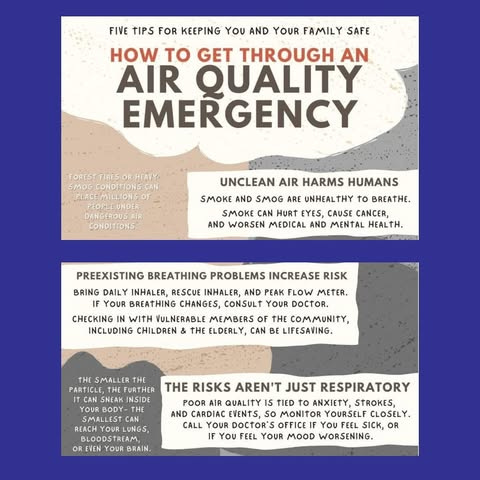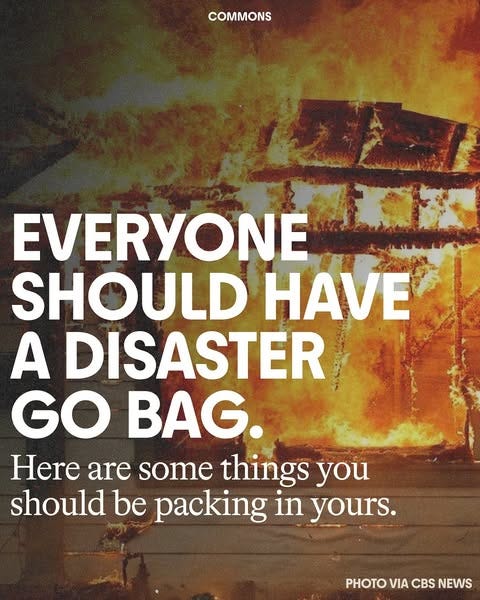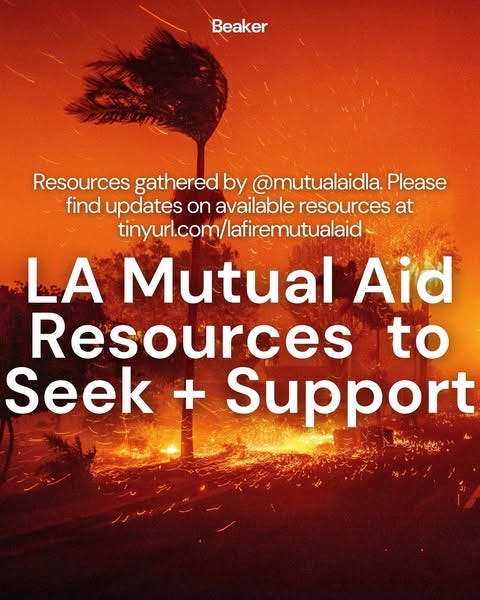The Environmental Third Shift: Supporting Mothers Navigating Climate Disasters with Resilience and Care 💔
This blog explores the unique emotional and caregiving burdens mothers face during climate disasters, offering compassionate support, actionable strategies, and a framework for resilience.

If you’re reading this with ash falling outside your window, scanning the horizon for smoke, or refreshing news updates to learn whether your loved ones need to evacuate, my heart is with you. I see the fear, grief, and anxiety you are carrying—not just for your family’s safety, but for the land, the animals, and the very air we breathe.
Motherhood, at its heart, is about holding and nurturing life. But in an age of climate crisis, this sacred role comes with new and heavy burdens. Fires, floods, and other disasters are becoming more frequent, forcing us to adapt in ways we never imagined. For those in fire zones, the weight of caregiving grows heavier—monitoring air quality, shifting caregiving plans, and soothing children in smoky skies. For others watching from afar, the grief and dread can feel equally consuming, as we mourn for the Earth and worry about what the future holds.
In these moments, I know it can feel like your reserves are depleted, but your care and presence are acts of profound strength, holding together both your family and your connection to the Earth. As someone who has worked extensively with mothers navigating the intersection of eco-anxiety and caregiving, I have seen how these challenges shape our lives and deepen our carework. The Mother Tree Method draws on years of research and practice to offer a path forward—not just to cope with the weight of eco-anxiety, but to reframe caregiving as a source of resilience and connection.
A Mother’s Third Shift
Sara Jaquette Ray discusses the concept of the environmental third shift in her work on green motherhood, emphasizing the additional labor mothers take on to care for the planet. Building on Arlie Hochschild’s second shift, which described the unpaid work women perform after their paid workday—childcare, housework, and emotional caregiving—the third shift captures the invisible labor of environmental care. Today, this third shift includes not just eco-conscious decisions but also navigating crises like wildfires, both for our families and as part of a larger web of life.
Green motherhood often pushes mothers into a double bind, burdening them with unsustainable, individualistic care practices that ultimately reinforce the very systems causing ecological harm. The Mother Tree Method offers an alternative—a relational, ecological approach that moves beyond these distortions, grounding mothers in their connections with the land, their families, and the broader web of life. In this framework, we do this work deeply so we can avoid becoming trapped by the impossible expectations of green motherhood.
The Environmental Third Shift: Expanded by Crisis
The environmental third shift describes the often-unseen labor of mothers balancing family life with care for the Earth. It includes:
• Eco-Conscious Decision-Making: Choosing sustainable products, reducing waste, and educating children about climate values.
• Climate-Related Emotional Labor: Managing eco-anxiety, grief, and guilt while trying to model hope for the next generation.
• Kin-Keeping for the Human and More-than-Human World: Caring for people affected by disasters as well as ecosystems, watersheds, and nonhuman beings, recognizing all as part of an interconnected web of life.
This third shift has always extended beyond the personal to the collective. For me, mentoring and therapy are deeply rooted in kin-keeping—nurturing the connections between people, families, and the ecosystems we depend on. These practices push back against the depersonalized, individualistic approaches so pervasive in our society, reminding us that healing is inherently relational.
In moments of crisis, kin-keeping takes on new dimensions. It may mean checking on neighbors displaced by a wildfire, comforting a grieving child, or tending to a damaged watershed after the flames subside. Following a historic flood in my community, caregiving extended to repairing riparian areas—stabilizing soil, replanting native species, and creating ecological education opportunities for children. These acts of kin-keeping fostered healing for both the land and the community, reminding us that caregiving includes the Earth itself.
For those living through fires today, that time will come later. Right now, the focus is on immediate survival and emotional support:
• Monitoring Air Quality: Adjusting caregiving plans to protect children’s health during smoky conditions using tools like AirNow.gov or PurpleAir.
• Disaster Planning: Preparing evacuation kits with essentials like water, non-perishable snacks, medications, and important documents. Like these here at Ready.gov
• Emotional Support in Crisis: Comforting children while managing your own fear and grief with small grounding practices like breathing together or naming things you can see and hear around you.
If you or your child are struggling with panic or anxiety, try this calming breath exercise:
Inhale deeply into your lower stomach, then exhale slowly through pursed lips as if breathing out through a straw. To further engage your sensory system, hold your hand in front of your face and feel your breath against your palm. For added grounding, bring your other hand to your cheek as a gesture of self-love.
For children, try these additional strategies to encourage calm:
• Place a bean bag or beanie baby on their stomach as they breathe. Watching it rise and fall can encourage slow, diaphragmatic breaths.
• Have them blow bubbles or pretend to blow up a balloon. These playful activities naturally slow their exhale and help regulate breathing.
• Use a small, comforting object, like a stuffed animal, that they can hold or press to their chest for added grounding.
If you have no risk of fainting while experiencing panic, you can also try this breathing technique in a forward fold, letting your head hang gently toward the ground to calm your nervous system further.
During wildfire seasons, I supported mothers overwhelmed by the stress of protecting their families, helping them process their fears and navigate caregiving decisions. As a mother, I monitored air quality and shifted caregiving plans for my youngest, ensuring safety indoors during poor conditions. I remember the small rituals we created to bring calm—a day spent building pillow forts and reading stories indoors, a shared moment of deep breathing to ease anxiety. These acts reminded me that care doesn’t have to be perfect; it just has to be present.
After floods, I also worked with caregivers who were navigating the deep fear of water—helping them process their trauma in the wee hours of the night, even when they were not physically affected or directly in danger. These conversations revealed how disasters live on in the body, shaping how we protect and nurture others long after the immediate crisis has passed. Supporting these mothers taught me that caregiving often means holding space for the invisible wounds that emerge after the storm.
Kin-keeping, in this expanded form, reminds us that caregiving is inherently relational. It encompasses not just the immediate needs of our families but also the well-being of the people, land, water, and nonhuman beings we are connected to. In every act of mentoring, therapy, caregiving, or restoration, we weave ourselves back into the web of life. While immediate crises demand our focus, these relationships are part of the larger story of resilience and renewal.
To the Mothers Watching and Waiting: You Are Not Alone
Even if you are far from the flames, watching the fires can bring its own weight of grief and guilt. For many mothers, these fires also resurface trauma from past disasters. I know there are mothers navigating these fires who have already endured historic floods, hurricanes, or other “unnatural” disasters. As a new crisis unfolds, the weight of old wounds can resurface, amplifying the fear, grief, and exhaustion they already carry. My heart is breaking for them.
These emotions are valid. Recognize them as part of your care for the Earth and your desire for a better future. Channel these feelings into reflection or action—whether through a donation, a letter to your representatives, or simply tending to your corner of the world.
My Heart Is With You
To every mother living through fires, or those whose past traumas are resurfacing as new disasters unfold: you are not alone. My heart aches for the retraumatization so many of you are carrying, as past and present crises intersect.
Your carework—whether it’s comforting your children, staying alert to protect your family, or holding space for your grief—is vital and courageous. Each act of care—whether for your family, your neighbors, or the Earth—reinforces the kinship that sustains us all.
Together, as mothers and kin-keepers, we hold space for grief and transformation, one breath and one step at a time. Whether you are directly impacted or offering support from afar, know that every step, every act of care, and every moment of connection strengthens this web of resilience.
Tending Practice: Supporting Families Affected by Fires from Afar
Kin-keeping isn’t limited to those on the front lines of a disaster. For those far away, these practices allow us to extend care to both the human and more-than-human world. Every action, no matter how small, strengthens the web of life that connects us all:
1. Extend Support Through Action:
• Donate to organizations providing relief to families, such as California Fire Foundation, local mutual aid networks, or food banks in affected areas. Mutual aid networks address community-specific needs during crises, nurturing resilience in affected families and communities.
• Support ecological restoration efforts, like One Tree Planted or local watershed recovery initiatives. These contributions heal the land and sustain ecosystems, reinforcing our connection to the Earth.
2. Write a Letter of Solidarity:
• Advocate for systemic change by writing to policymakers about the need for climate resilience, wildfire prevention, and community preparedness. Each letter becomes a thread in the broader tapestry of kinship, connecting your voice to collective action.
• Share messages of hope and solidarity with affected communities through local organizations. A kind word reminds others that they are not alone in their grief.
3. Honor What’s Lost:
• Light a candle, plant a tree, or tend to your local environment as a gesture of care for those experiencing loss. Doing this with your children not only teaches them about the power of connection but also allows them to contribute to the web of life.
4. Ground Yourself to Stay Present:
• When feelings of helplessness or overwhelm arise, pause to center yourself. Stand barefoot on the Earth or sit in a quiet place. Take three deep breaths, imagining the strength of the Earth beneath you. With each exhale, send strength and care to the families and ecosystems affected by the fires. These breaths are not just for yourself—they ripple outward, carrying care to those in need.
5. Engage Your Skills or Resources:
• Offer your expertise or resources remotely. Mental health professionals can provide pro-bono telehealth sessions to support those in crisis. Artists and storytellers can raise awareness and funds for relief efforts. Everyone has a role in the broader network of kin-keeping, where each contribution adds to the strength of the whole.
Choose one step that feels meaningful to you today—whether it’s planting a tree, donating to fire relief, or simply pausing to breathe deeply and send strength to others. Every act of care reinforces the kinship that sustains us.






